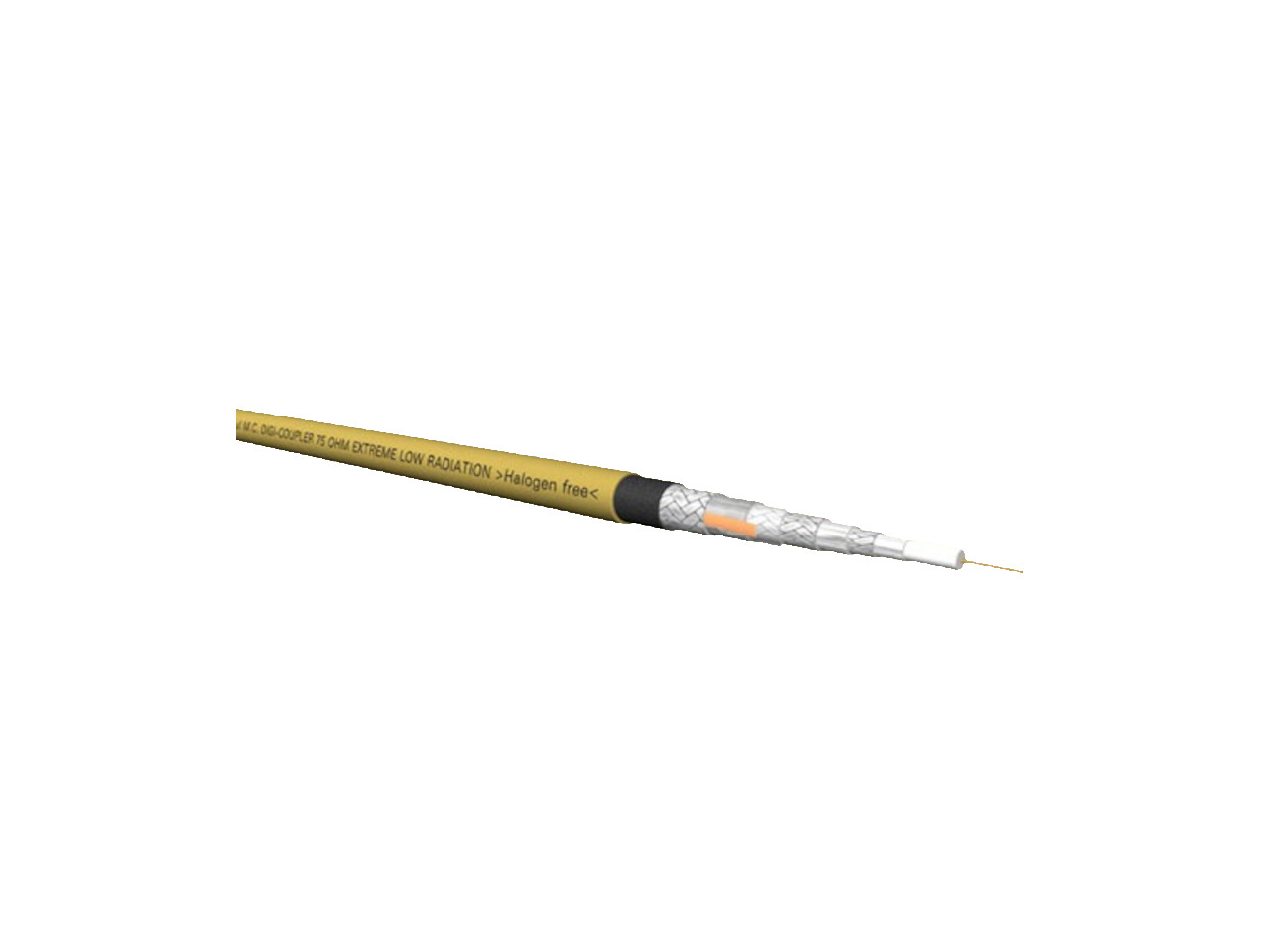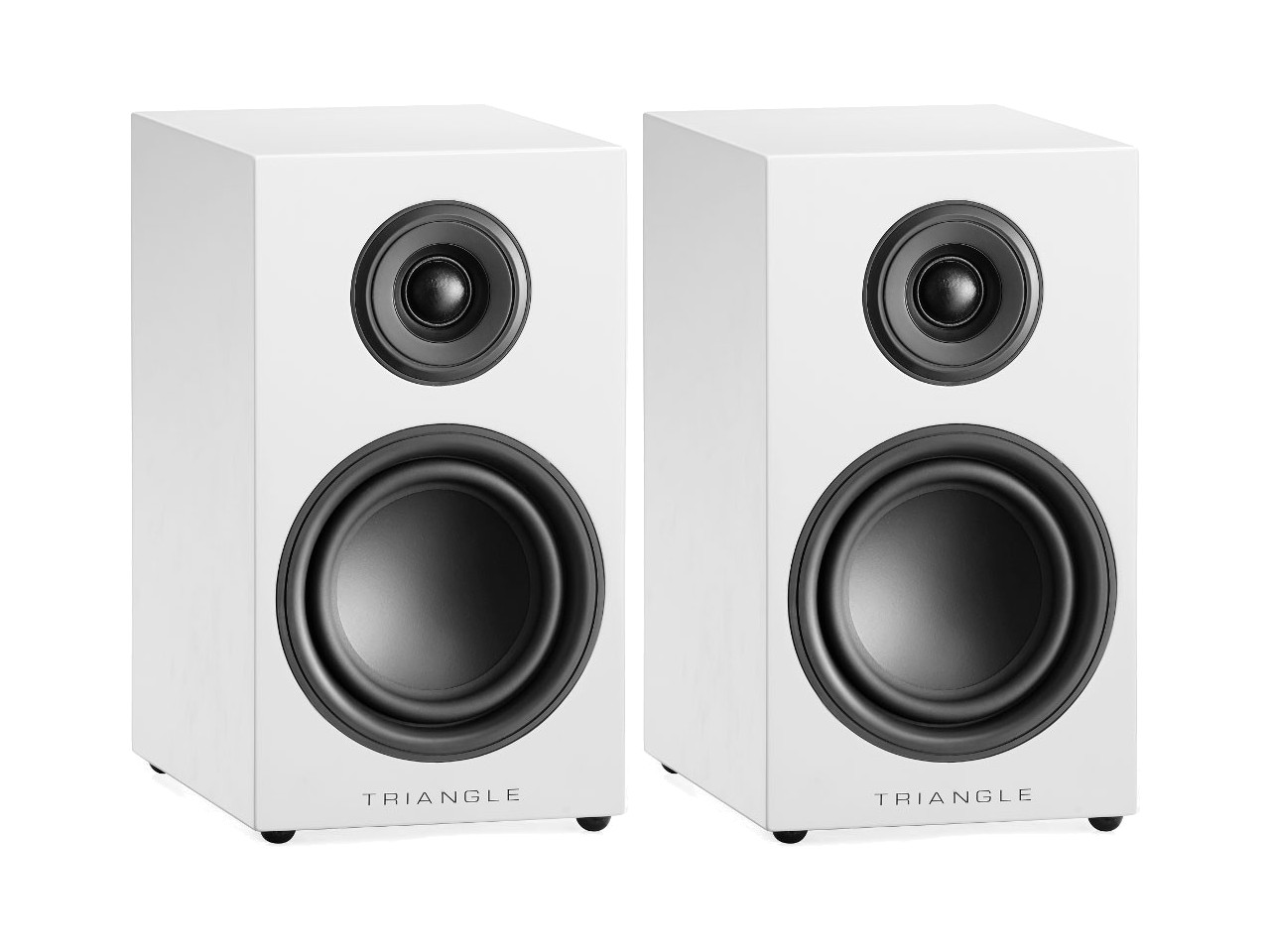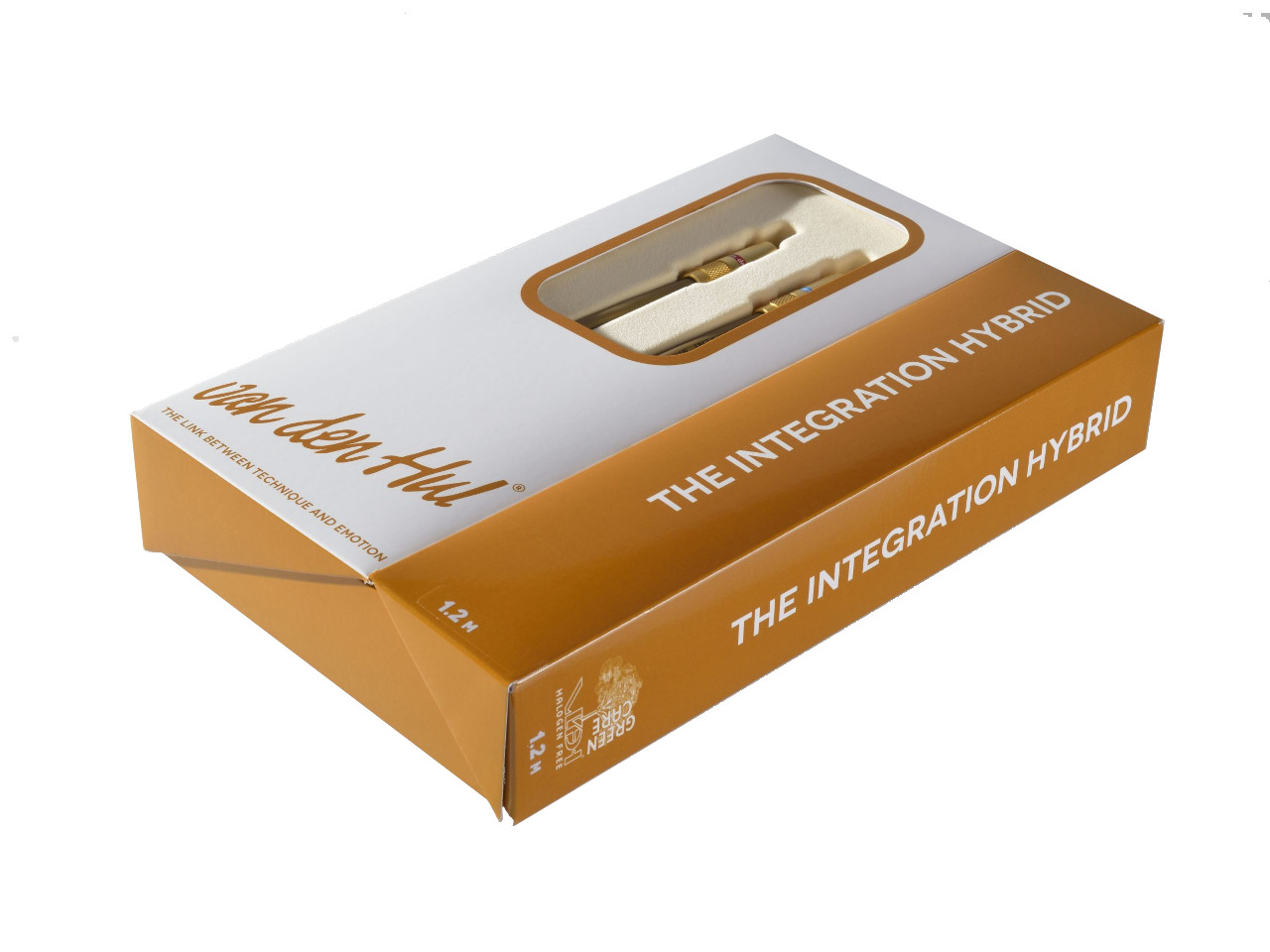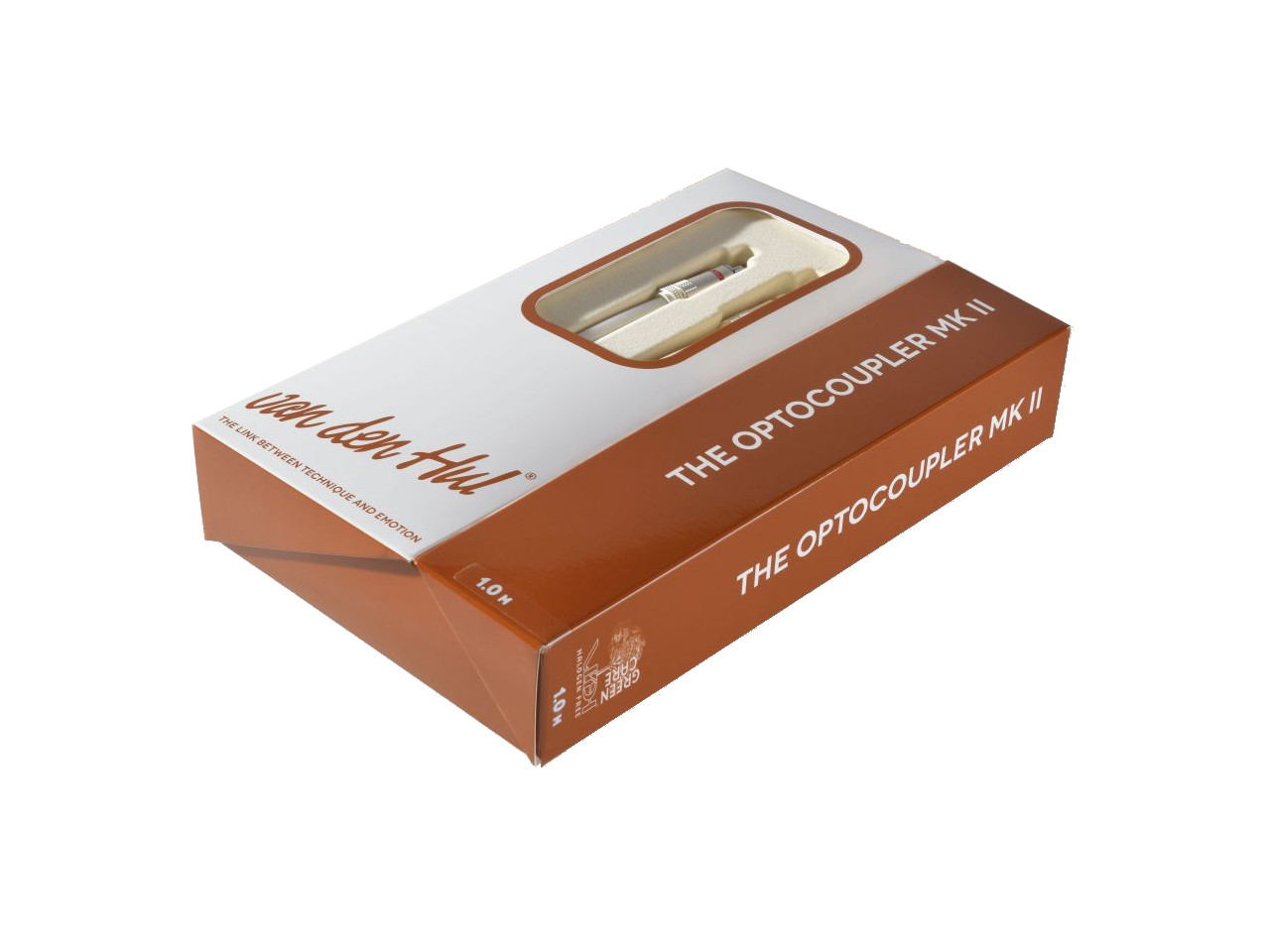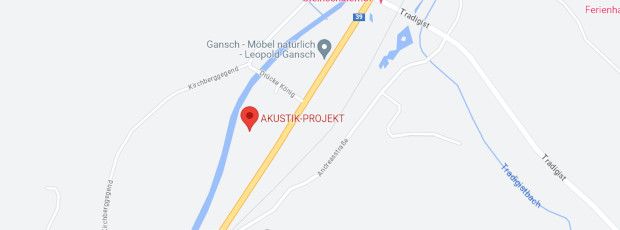139,00 €
% 146,00 € -4.79%
Lagernd - sofort versandbereit - Lieferzeit: 1-4 Tage **
Produktinformationen "Van den Hul Digi-Coupler RCA 1m"
Konfektioniertes Kabel mit 75 Ohm RCA Steckern
The DIGI-COUPLER 75 Ohm is our top level SPDIF digital audio interconnect cable, though is equally suited for Video and HF signal transport at a maximum performance level.
The DIGI-COUPLER 75 Ohm has been specially designed bearing the highest possible transmission quality of 75 Ohm impedance level SPDIF consumer format digital audio in mind, and is aimed at the critical audiophile as well as the professional.
The DIGI-COUPLER 75 Ohm 19s special design covers all aspects required for a flawless and reliable transmission of SPDIF digital audio at short range as well as across large studio distances and allows for notable improvements in your audio quality. The cable 19s strict HF design likewise benefits the transport of Video and HF signals well into the GigaHertz range.
Features:
-
Very constant and precise 75 Ohm impedance: 75 Ohm ± 0.5 Ohm up to 3 GHz.
This is important, since otherwise the signal will be reflected up and down the cable (i.e. standing waves). Such signal reflections deteriorate signal integrity by causing the digital audio signal as seen at the receiving end to be overlapped with time delayed replicas of itself (i.e. signal reflection induced inter-symbol interference). At the receiving side this negatively influences the D-to-A converter clock retrieval circuitry 19s (PLL 19s) ability to maintain a stable sample rate (i.e. fluctuations in the timing interval between the audio signal 19s samples occur). The resulting distortion of the audio signal is officially called 1Cjitter distortion 1D and is particularly perceivable as reduced resolution and imaging.
Note: To maintain a precise 75 Ohm impedance and avoid signal reflections, the advised minimum value of bending radius for The DIGI-COUPLER 75 Ohm is 8.0 cm.
-
Very high frequency bandwidth:
As an example: The -3 dB bandwidth of a 10 m run is 770 MHz. (For more data see Attenuation graph in the sidebar). A high bandwidth is important: An SPDIF digital audio signal contains frequencies that extend far beyond the usually specified minimum required bandwidth (~6 MHz). Even though this minimum bandwidth provides usable transmission, accurate data transmission and recovery of low-jitter clocks in real-world noisy environments will benefit from greatly increased bandwidth.
The digital audio signal consists of elementary data units (bits) in the form of zeros and ones. These are square waves whose vertical edges serve as a demarcation for the signal receiving circuitry (e.g. D-to-A converter) to be able to retrieve the signal clock and to recognise the contained bit values. Cable bandwidth decreases with cable length. Lower bandwidths increasingly cause the digital audio signal 19s square wave edges to get rounded off and smeared over time (inter-symbol interference). This impairs the receiving circuitry 19s ability to correctly determine the individual bit values and their timing. The so-called 1Cjitter distortion 1D and 1Cbit error rate 1D increase and the audio quality decreases.
A short note regarding optical fiber cables: Although these exhibit a very high bandwidth and near perfect noise immunity by themselves, the bandwidth of the extra involved optical transmitter and receiver parts (especially in consumer devices) is one of the most important performance limiting factors. Others are: the optical power available, modal dispersion, attenuation and connector transition losses. Depending on the situation, though in many cases, coaxial SPDIF transfer is preferable if low jitter distortion replay is aimed at 14 provided a good cable like our DIGI-COUPLER 75 Ohm is used.
-
Very low signal attenuation per unit length:
As an example: At 100 MHz the attenuation is a mere 0.11 dB/m. (For more data see HF Performance Graphs in the sidebar). Low signal attenuation (i.e. low signal loss) is especially important when long cable runs are used (e.g. in professional / studio applications). To maintain optimum signal quality, a maximum signal-to-noise ratio at the receiving side is required. The signal therefore needs to undergo as little attenuation as possible during transport. This of course equally applies to digital audio as to video and HF signals. A low signal attenuation also positively adds to immunity against external noise, though latter starts with a good shielding.
-
Superscreened / Low Transfer Impedance design:
The DIGI-COUPLER 75 Ohm is a so-called 1CSuperscreened 1D or 1CLow Transfer Impedance type 1D cable. To maximize performance in keeping the signal in and noise (RFI and EMI) out, the highest possible shielding factor is required. Without compromises, The DIGI-COUPLER 75 Ohm 19s design features a 1Ctriaxial construction 1D with multiple highest quality shields.
In The DIGI-COUPLER 75 Ohm not less than 3 dense braided shields, 3 foil shields and a Linear Structured Carbon ® (LSC) saturated outer layer are used. This combined shielding factor results in ultra high screening attenuation and ultra low transfer impedance, allowing the cable to carry the designation 1CSuperscreened 1D.
The DIGI-COUPLER 75 Ohm 19s supreme immunity against radio frequency and electromagnetic interference allows trouble-free use of large lengths. Multiple lengths can be run in parallel without risk of mutual interference, even with other cabling (e.g. in conduits).
Signal cables are denominated 1CSuperscreened 1D or 1CLow Transfer Impedance type 1D when their Transfer Impedance is as low as or lies below 50 µOhm/m. The lower the Transfer Impedance of a cable, the less susceptible its transferred signal is to external interference, and equally, the less noise the cable itself radiates. This is expressed in the so-called screening attenuation figure, which indicates the ratio between the power radiated from the cable and the signal level it transports.
Our Superscreened DIGI-COUPLER 75 Ohm cable 19s screening attenuation and transfer impedance show excellent figures up to our measurement limit of 3 GHz.
-
High purity and durability:
The DIGI-COUPLER 75 Ohm features high purity dense silver coated stranded shields as well as a rugged and hard-wearing jacket made of our HULLIFLEX ® polymer insulation material. All providing optimal protection against chemical (corrosive) attack from the outside world and ensuring a very long lifespan.
Bearing professional, broadcast and high resolution applications in mind, The DIGI-COUPLER 75 Ohm 19s design has all the technology on board for exceptional performance without compromise.
The DIGI-COUPLER 75 Ohm provides the cleanest possible signal transport in all 75 Ohm impedance level applications and is the ultimate choice for the critical audiophile, videophile and professional.
Anmelden
Sicherheitsinformationen:
- Überprüfen Sie regelmäßig alle Kabel auf Schäden, Risse oder freiliegende Drähte. Verwenden Sie nur intakte Kabel, um Kurzschlüsse und Stromschläge zu vermeiden.
- Verlegen Sie Kabel so, dass sie keine Stolperfallen darstellen. Verwenden Sie Kabelkanäle oder -binder, um Kabel geordnet und sicher zu halten.
- Halten Sie Kabel von Wasserquellen und feuchten Umgebungen fern, um Kurzschlüsse und elektrische Gefahren zu vermeiden.
- Achten Sie darauf, dass Kabel nicht unter Türen eingeklemmt oder unter schweren Möbeln zerquetscht werden, da dies zu Beschädigungen führen kann.
- Verwenden Sie im Freien nur Kabel, die für den Außeneinsatz zugelassen sind, um wetterbedingte Schäden zu vermeiden.
- Ziehen Sie Kabelstecker immer vorsichtig aus der Steckdose und fassen Sie dabei den Stecker, nicht das Kabel, um Beschädigungen zu vermeiden.
- Verwenden Sie möglichst keine selbstgebastelten Verlängerungen oder unsachgemäß installierten Verlängerungskabel. Kaufen Sie stattdessen zugelassene Verlängerungen.
- Halten Sie Kabel außerhalb der Reichweite von Kindern und Haustieren, um Unfälle, Schäden und möglichen Stromschlägen vorzubeugen.
- Weitere Warnhinweise und Sicherheitsinformation finden Sie auf der Hersteller Webseite.
Hersteller: Van den Hul B.V., Oude Apeldoornseweg 69, NL-8171 LV Vaassen - info@vandenhul.com





